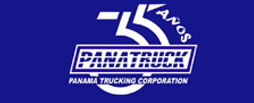Source: Port of Long Beach
To keep cargo flowing into the future, the details of its journey must also flow.
That’s why the Port of Long Beach is forging ahead with its Supply Chain Information Highway, said Port Executive Director Mario Cordero. “Just as our industry relies on the twenty-foot equivalent international shipping container, we need uniform standards and a common digital system for sharing data. We’re working with all our partners to make data-sharing an efficient, secure and free reality.”
Announced in December, the Supply Chain Information Highway has quickly moved from proof of concept to demonstration. Currently, the Port is running simulations with participating terminal operators, ocean carriers, trucking companies, railroads and beneficial cargo owners.
“The pilot uses real data that supports day-to-day operations,” said Port of Long Beach Deputy Executive Director Dr. Noel Hacegaba. “Even in this testing phase, the initiative is already enhancing the planning process our partners use to track cargo and optimize their operations.”
The simulations come on the heels of TPM 2022, the leading industry conference held annually in Long Beach for the trans-Pacific and global shipping community. During the event, the Port of Long Beach introduced the data delivery tool to the industry, and the Port of Oakland and the Northwest Seaport Alliance announced their support for the initiative. The Utah Inland Port Authority has subsequently joined the initiative, and other port authorities are poised to follow suit. Port of Long Beach, TPM 2022, Utah, Inland, Port, UNCOMN, NWSA, hub news
Developed for the Port of Long Beach by St. Louis-based UNCOMN, the software platform provides shippers and the supply chain with data that can be integrated into their own systems, enabling them to track cargo from origin to destination and make better operational decisions along the way. “Our stakeholders want a practical and flexible way to access data that is accurate, reliable and actionable,” Hacegaba said. “Long Beach alone has more than 200,000 different shippers ranging from small businesses that move several containers a year to major retailers that import tens of thousands of containers annually. The Information Highway allows them all to access the data they need so they can then use that data to optimize their own operations.”
The system also functions as a common corridor connecting other data-sharing platforms, Hacegaba added.
“The whole idea is to liberate data. Instead of requiring the supply chain to conform to a one-size-fits-all system, the Information Highway flips the equation by accommodating data delivery to meet each user’s unique needs.”
THE NEED FOR DIGITAL SPEED
Prior to showcasing the Supply Chain Information Highway at TPM 2022, the Port of Long Beach had been exploring various data-sharing solutions for several years. Laying the groundwork included conducting extensive outreach and engaging stakeholders long before the pandemic and ensuing cargo surge, Hacegaba said. “The pandemic-induced supply chain crisis magnified the need and urgency for a Supply Chain Information Highway. The lack of visibility throughout the supply chain disruptions has been glaring.”
The Northwest Seaport Alliance, a marine cargo operating partnership of the ports of Seattle and Tacoma, welcomes the opportunity to collaborate with the Port of Long Beach on the Supply Chain Information Highway, said NWSA Chief Operating Officer Tom Bellerud. “We are looking for any means of better understanding of cargo flows, better transparency for ourselves and our own planning processes, as well as our marine terminal operators, shippers, Class I railroad partners, the trucking community, and any other member of the supply chain that can gain an advantage from this. While our industry is highly competitive, we all benefit from a level playing field.”
The larger initiative aligns with a digital platform NWSA is developing to give shippers, dispatchers and drivers greater visibility when making and managing trucking appointments, said Operations Business Analyst Alicia Blake. “We are working with a third party to aggregate the data and better share the available information to reduce congestion. Although it’s not physical improvements like bridges and roadways, data has really become one of those integral pillars of any supply chain.”
Similarly, the Port of Oakland is developing a suite of technology-driven demonstration projects to enhance truck flows on arterial streets in and out of its terminals, improve supply chain transparency and velocity, and increase security. These objectives are consistent with the systemwide efficiencies Long Beach is pursuing through its Supply Chain Information Highway initiative, said Port of Oakland Director of Communications Robert Bernardo. “At the end of the day, the entire supply chain is a public-private partnership that has common challenges and common goals. We have to become a technology-proficient industry.”
NATIONAL MOMENTUM
As a result of the pandemic and the subsequent backlogs that have slowed cargo moving through every major U.S. port, the nation has learned how important the supply chain is to daily life and conditions on the ground have generated widespread support for digital solutions that help speed goods to market. Measures aimed at strengthening the supply chain include the federal Infrastructure Investment and Jobs Act signed into law in November by President Biden. The $1.2 trillion package includes more than $5 billion for port projects and an additional $27 billion in grant opportunities for ports. At the state level, California Gov. Gavin Newsom has recommended $1.2 billion for port, freight and goods movement infrastructure and an additional $30 million for operational and process improvement port grants in his proposed 2022-23 budget.
The Port of Long Beach will aggressively pursue these resources, just as it has done to help fund its capital improvement and environmental programs, Hacegaba said. “The Supply Chain Information Highway is a form of infrastructure that will complement and support our physical infrastructure. By enabling efficiencies via improved information-sharing and increased visibility, we put our partners in a position to optimize their operations while ensuring our investments in physical infrastructure are maximized.”
As the Port of Long Beach moves forward with the Supply Chain Information Highway, recent complementary initiatives have emerged. These include a national project the White House announced in mid-March called the Freight Logistics Optimization Works, or FLOW. Led by the U.S. Department of Transportation, the project aims to pilot an exchange of key freight information among members of the goods movement supply chain. The Port of Long Beach is among the 18 participants – ports, ocean carriers, terminal operators, retailers, chassis providers, and logistics and warehousing companies – tapped to collaborate on data-sharing to ease supply chain congestion, increase cargo velocity, and reduce the costs associated with goods movement ultimately borne by consumers.
Other government efforts include the Federal Maritime Commission’s Maritime Data Infrastructure initiative. The project seeks to establish standards and best practices for data access and transmission to support a “reliable and stable ocean transportation system.” Additionally, the Supply Chain Optimization and Resilience (SCORe) Coalition – a group of public and private sector members that includes major retailers; supply chain, transportation and technology leaders; and the ports of Long Beach and Los Angeles – is focused on building consensus for international standards for a national freight data portal.
These and other efforts show there is unprecedented support for data solutions like the Supply Chain Information Highway that can solve real problems.
“Efficient, reliable data flow is the key to efficient, reliable cargo flow,” Hacegaba said. “The Supply Chain Information Highway will provide the end-to-end visibility the entire system needs to optimize cargo flows.”
![]()

































